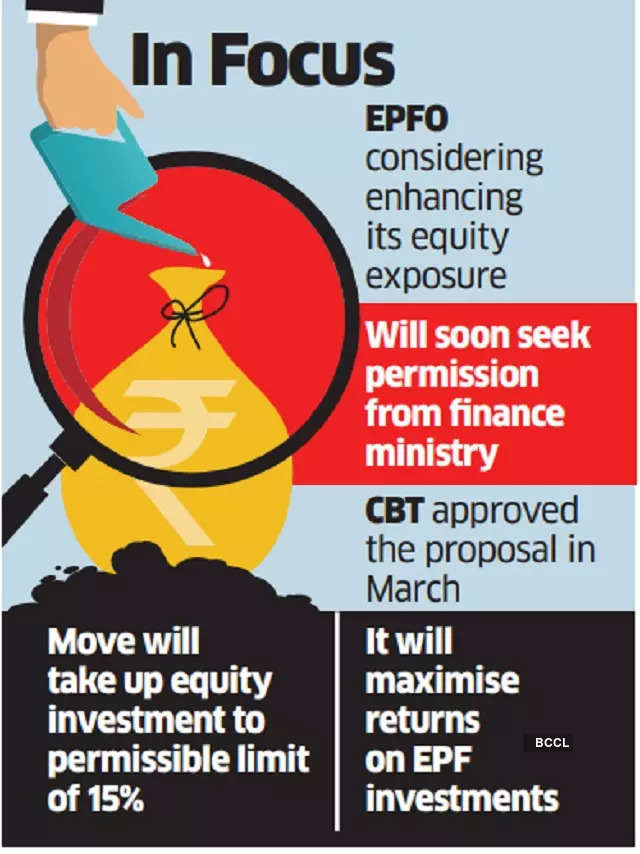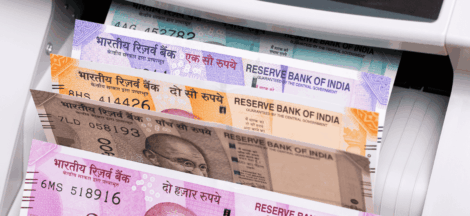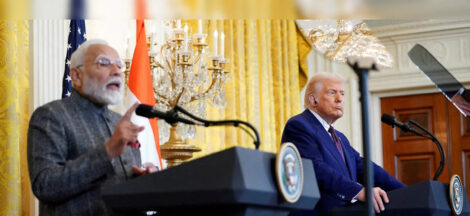NEW DELHI: Encouraged by the relatively high returns for Employees’ Provident Fund Organisation (EPFO) from equity investments since 2015, the government is looking to hike the retirement fund body’s exposure to the segment significantly. The higher equity exposure – roughly 9.5% of the EPF investible surplus is currently invested in specified exchange-traded funds (ETFs) – is being planned with a view to raise the returns for EPF subscribers substantially from 8.25% now (FY24) official sources told FE, adding that the returns used to be as high as 10-12% in the 1990s.
The labour ministry has recently formed an internal committee to look at ways to achieve higher investments in equity, the sources added. The move may also result in diversifying the EPF’s equity portfolio, which is currently restricted to ETFs.
“We are aiming to peg higher annual rate of interest for EPF subscribers, and are exploring ways to achieve that,” said an official, on condition of anonymity. Last year, as many as 74 million subscribers and their employers contributed to the EPF.
The EPF interest is calculated on a monthly basis on the contributions received by subscribers, but deposited into the EPF account only on March 31 of the relevant financial year.
In FY23, the EPFO had fixed the interest rate at 8.15%, and 8.10% in FY22. Since FY02, the EPFO has not declared the interest rate of more than 10%. For FY01, it had fixed the interest rate at 11%, and in 1990s, the subscribers used to get even higher returns.
“We can give higher interest rates, if EPF generates higher returns from its investments, and the most appropriate route for that is to expand exposure in equities,” said the official.
The total investments made by the retirement body fund as of FY24 end was Rs 15.29 lakh crore. Of this, 9.5%, or Rs 1.45 lakh crore, was invested into ETFs.
The labour ministry, in 2015, had notified that 5-15% of the fresh accretions of EPF shall be exposed to “equities and related investments”. Initially, the EPFO had started with an investment of 5% in equity through ETFs (2015), but raised it to about 10% in the subsequent years. “The investment limit is 15%, and the EPF is aiming to reach that limit,” said the official. For a higher share of investible surplus to be channelled into equity, the investment norms would need further relaxation.
The notional return from equity investments for EPFO were 14.67% and 16.27%, respectively, in FY21 and FY22. The returns are believed to have risen further, even though no official data is made publicly available.
The EPF offers the subscribers one of the most attractive risk-free returns amongst all savings instruments. It is also tax-free for employees’ contribution of up to Rs 2.5 lakh a year.
Apart from equity, the EPFO has invested majorly in central government securities, state development loans, and corporate bonds of PSUs and private sector. Sources say that the yield generated by debt portfolio managers of EPFO in FY24 was 7.62%, which is higher than the benchmark yield of 7.57% for the last fiscal.
Under the notified investment norms, EPFO can invest shares of listed companies with a market cap of not less than Rs 5,000 crore or in such derivatives.
On November 30, the EPFO’s Central Board of Trustees had approved a redemption policy for ETF investments. The CBT approved reinvestment of the 50% of redemption proceeds from ETFs back into the central public sector enterprises (CPSEs) and Bharat 22 funds. The CPSE ETF and Bharat 22 ETF have generated a return of around 40% and 22%, respectively, for investors, in the past one year.
Source: The Financial Express



 Indian Equities Tumble, Rupee Hits Record Low As FPIs Turn Risk-Averse
Indian Equities Tumble, Rupee Hits Record Low As FPIs Turn Risk-Averse 